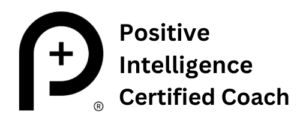Well, it’s October, Breast Cancer Awareness Month. Instead of railing against the commercialism behind so much of the pink as I’ve done in the past, I’ll do my part as a survivor to increase your awareness of what it’s like for a patient after she’s been diagnosed and is considering treatment options.
The scene below, excerpted from my upcoming book Blooming into Mindfulness (which is about much more than breast cancer) describes my first consultation with the plastic surgeon after learning that I had malignancies in three different quadrants of my left breast.
To set things up for you, my husband, Mark, and I are in the plastic surgeon’s exam room. I’m in a hospital gown, sitting on the edge of the exam table. We’re waiting for our consult with the head of Georgetown Hospital’s plastic surgery department (who has since retired).
“Look,” I said to Mark. “There’s the Box ’O Boobs.”
I pointed to a stack of clear plastic drawers stuffed with silicone breast implants in the corner of the plastic surgeon’s exam room. It looked like a jellyfish colony. As we waited for our informational consult to begin, the Box ’O Boobs stared me down, the most recent manifestation of “This was never part of the plan.”
My mind was already reeling just from the waiting-room experience. The décor featured before-and-after photos of nose jobs and tummy tucks, and brochures for liposuction were stacked in neat containers next to women’s magazines. I wished I had a sign that read “I have cancer. Why are you here?”
The plastic surgeon’s resident—young, blond, and wearing a white lab coat and killer heels—arrived first. She explained that reconstruction would either entail implants or moving tissue from other parts of the body.
She told us that the first stage of reconstruction with implants is to insert a “tissue expander” between the rib cage and muscle. The expander, which is sort of like a folded up rubber ball, is slowly filled with saline in increments over three to four months. She may have used the rubber ball example, but I think it’s more like Jiffy Pop Popcorn foil tops that balloon to accommodate the popping kernels. The expander stretches the skin and muscle to create an opening, kind of like digging a hole big enough for whatever sized root ball you’re planting. Once the expander has been filled to approximately the size of the new breast, a final surgery switches out the placeholder for the not-so-real deal.
I was following the resident’s explanation until she started talking about the pig tissue. It goes something like this: in some cases, after the breast is removed, something needs to help hold the expander in place so that it doesn’t slip around while everything is healing. You wouldn’t want to wake up and find that the thing had slipped to the middle of your chest, after all, or around to your back, or down to your knee.
My eyes glazed over and I literally had trouble catching my breath after she mumbled that the tissue they use for this comes from either a human or a pig. Huh? I told her I had some Jewish ancestry. Though this is true, I am not observant and eat loads of bacon. I was only trying to buy time to get my heart rate down.
Her boss strolled in at that very moment. In response to my aversion to being a pig-tissue host, he said, “It’s no problem. The rabbis have cleared on it. I think they even bless the tissue before it goes out.” The resident chimed in that the tissue was washed “really, really well” to make sure that no genetic material was left. Great. The first test subjects probably grew curly tails and cloven hooves.
It felt good to have something so well-defined to be mortified about, when the rest of my emotions were seething below the surface, unprocessed and pulled in a thousand different directions. At the same time, laughing at the absurdity of it all was my way of staring cancer down, mocking it—even when the joke was on me.
Now that the plastic surgeon was there, the real exam began.
“Okay, let’s take a look,” he said. I held my robe open, feeling like a flasher. He grabbed my stomach fat and confirmed that I didn’t have quite enough there to use my own tissue for the reconstruction, especially in the event that cancer was found in the healthy breast and they needed to deal with that side, too (a comforting thought that hadn’t crossed my mind up to that point). I asked the same question I had posed in the unsuccessful first biopsy attempt: could they pull tissue from my butt, where the bulk of my fat was stored? He said it was possible, but the tissue comes off the very top and it leaves a little shelf.
I imagined serving martinis from my butt shelf while simultaneously holding out a tray of hors d’oeuvres to my guests. Always looking for efficiencies, I saw some benefit to the system. Mark was less enthusiastic.
The doctor said, “May I take another look?” I opened my robe. “You know,” he quipped, “every woman I’ve ever asked has shown me her breasts. No one has turned me down.” He added with a glint in his eye, “You know how they have Take Your Child to Work Day? My friends want to come to work with me every day.”
Everyone has her or his own relationship to humor, especially during a crisis. Personally, I rely on it to diffuse tension. I laughed at the doctor’s jokes and was grateful that he had helped keep things light, even while recognizing that some women—especially other cancer patients—would probably have found his wit terribly offensive. From an economist’s perspective, expending energy on feeling offended was an inefficient use of my resources. I didn’t know it at the time, but using economics logic to decide whether or not to feel like a victim isn’t all that different from mindfulness techniques.
If you enjoyed today’s entry and are not yet a subscriber, sign up above for free delivery of new posts to your email inbox. (I promise to never share your information.) Social media likes and shares are always appreciated as well!



